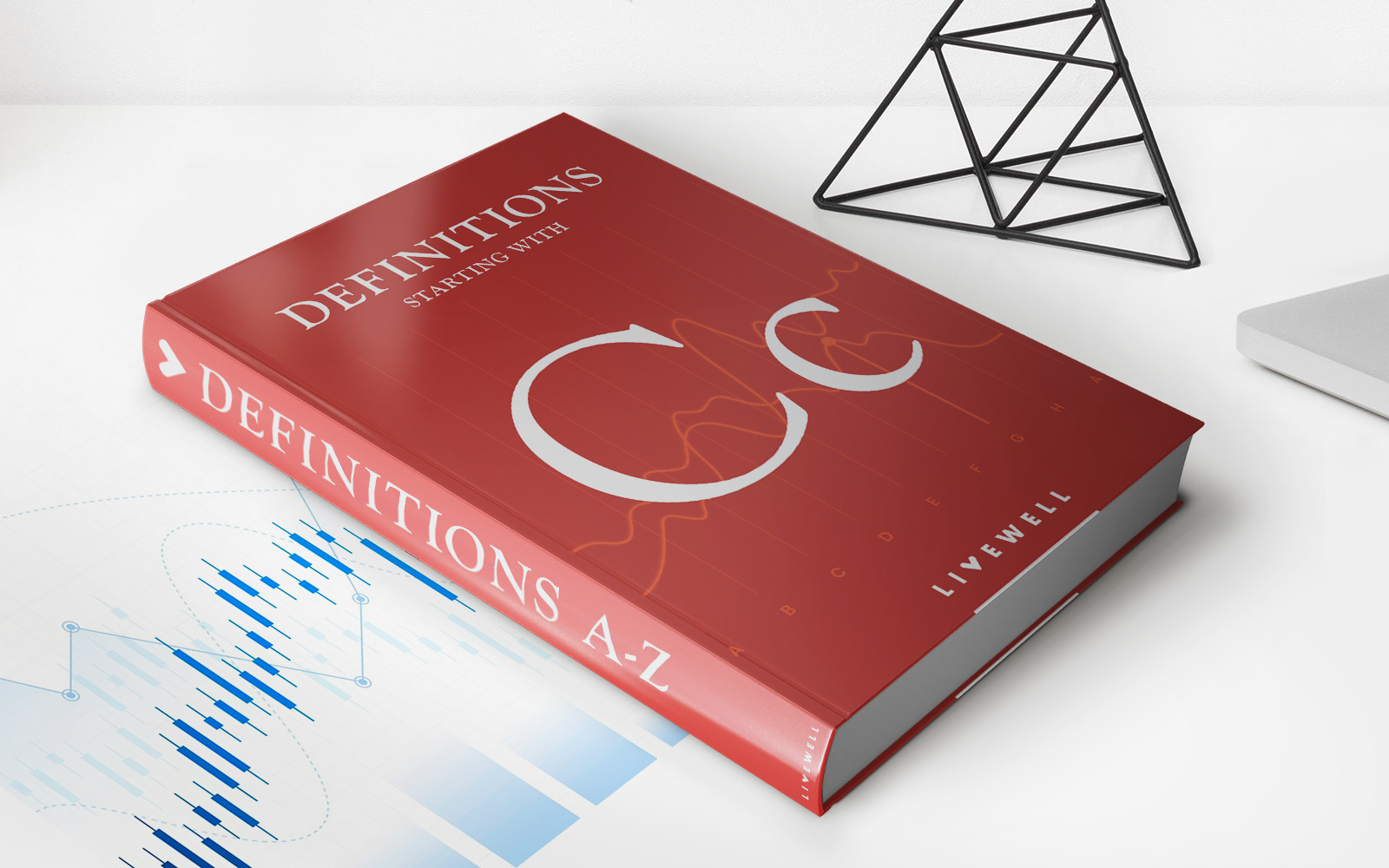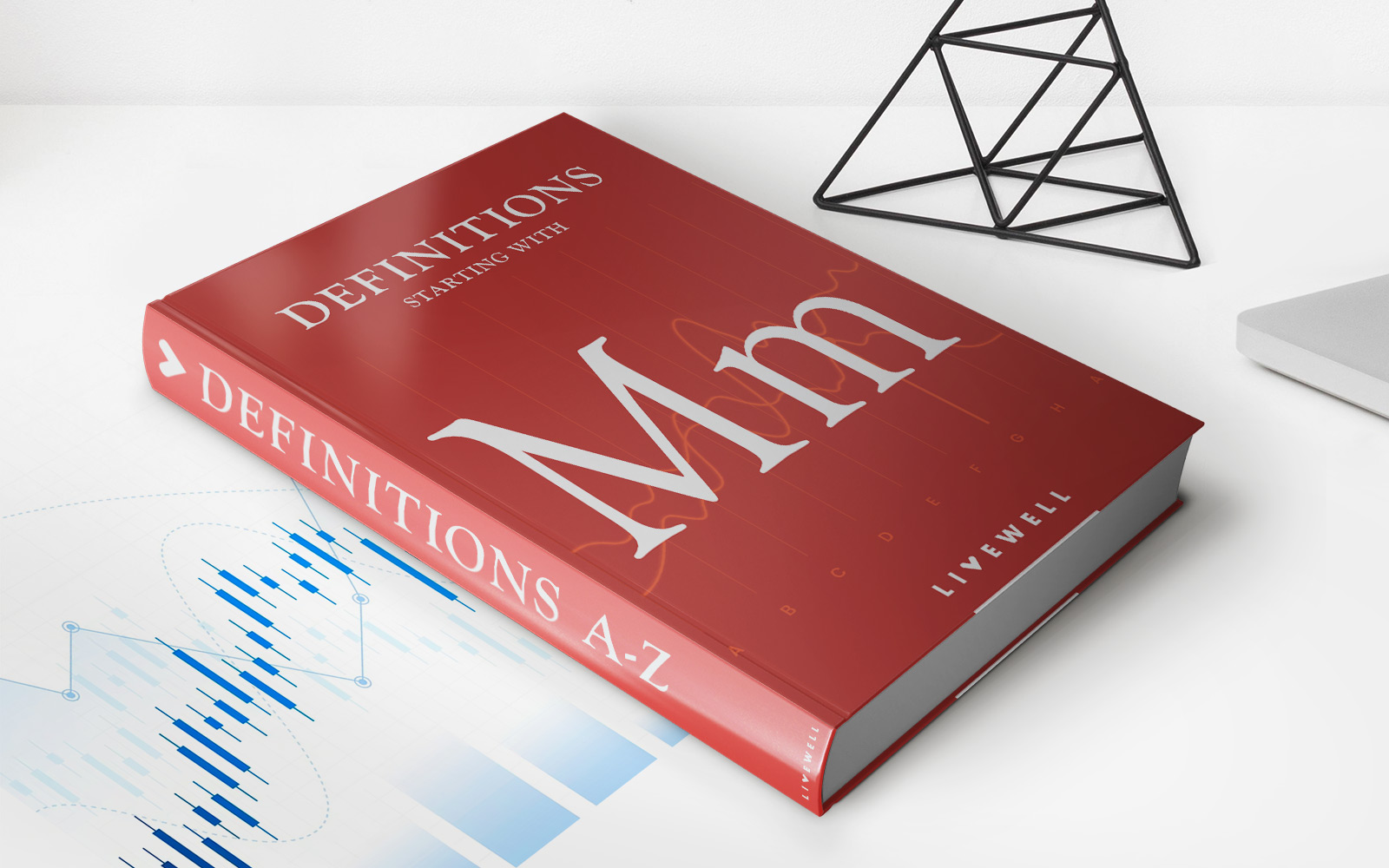Home>Finance>How Has Diageo Historically Managed Its Capital Structure?


Finance
How Has Diageo Historically Managed Its Capital Structure?
Modified: February 21, 2024
Discover how Diageo, a renowned beverage company, has effectively managed its capital structure throughout history. Explore their finance strategies and achievements within the industry.
(Many of the links in this article redirect to a specific reviewed product. Your purchase of these products through affiliate links helps to generate commission for LiveWell, at no extra cost. Learn more)
Table of Contents
Introduction
Welcome to our comprehensive analysis of how Diageo, one of the world’s leading beverage alcohol companies, has historically managed its capital structure. As an essential aspect of financial management, capital structure plays a crucial role in determining a company’s long-term financial health and sustainability. By striking the right balance between debt and equity financing, along with effectively managing dividend policy and share repurchases, Diageo has demonstrated its commitment to optimizing its capital structure.
Diageo, formed in 1997 through the merger of Grand Metropolitan and Guinness, boasts an impressive portfolio of iconic brands, including Johnnie Walker, Smirnoff, Guinness, and Captain Morgan. With a global presence in over 180 countries, Diageo’s commitment to producing quality spirits, wines, and beers has solidified its position as a market leader. However, behind the scenes, the management team at Diageo has been diligently managing the company’s capital structure to ensure its long-term success.
The management of capital structure is of paramount importance for any company, as it directly impacts its ability to fund investments, manage risk, and maintain an optimal cost of capital. Diageo, like other companies, has taken various measures to achieve an optimal capital structure, including strategically sourcing debt and equity financing, implementing effective dividend policies, and executing share repurchase programs.
Throughout this article, we will delve into Diageo’s historical approaches to capital structure management, explore their debt and equity financing strategies, analyze their dividend policies, and assess the impact of capital structure on the company’s financial performance. By examining Diageo’s capital structure management practices, we can gain valuable insights into their financial decision-making and understand how it has contributed to the company’s growth and success.
Overview of Diageo
Diageo is a multinational beverage alcohol company headquartered in London, United Kingdom. With a rich history dating back to the 18th century, Diageo has become a global leader in the production and distribution of premium spirits, wines, and beers.
The company’s impressive portfolio includes renowned brands such as Johnnie Walker, Smirnoff, Guinness, Baileys, Tanqueray, and Captain Morgan, among others. Diageo’s diverse range of products caters to various consumer preferences and has secured the company’s position as a dominant player in the industry.
Diageo operates in over 180 countries and employs more than 30,000 people globally. The company’s commitment to innovation, quality, and responsible consumption has earned it widespread recognition and numerous accolades.
One of Diageo’s key strengths lies in its geographical diversity. The company generates revenue from markets across the world, with a strong presence in North America, Europe, and emerging markets. This diversification helps mitigate risks associated with regional economic fluctuations or changing consumer preferences.
Furthermore, Diageo has a well-established distribution network, ensuring its products reach consumers efficiently and effectively. This global reach, combined with a robust marketing strategy, allows Diageo to connect with consumers and build brand loyalty.
Beyond its relentless pursuit of product excellence, Diageo is also committed to sustainable and responsible business practices. The company has implemented initiatives to reduce its environmental impact, promote diversity and inclusion, and support local communities.
In summary, Diageo’s comprehensive portfolio, global presence, innovation, and commitment to responsible business make it a powerhouse in the beverage alcohol industry. As we explore Diageo’s capital structure management, it is essential to consider these factors as they contribute to the company’s financial stability and growth.
Importance of Capital Structure Management
Capital structure management plays a critical role in shaping a company’s financial health and overall performance. It refers to the way a company finances its operations through a combination of debt and equity. A well-managed capital structure provides a company with the necessary resources to fund investments, manage risks, and optimize its cost of capital. Let’s explore the key reasons why capital structure management is crucial for companies like Diageo.
1. Funding Investments: A sound capital structure ensures that a company has adequate funds to invest in new projects, conduct research and development, and expand its operations. By maintaining an optimal mix of debt and equity, companies can strike a balance between leveraging their financial resources and not becoming overly burdened by debt obligations.
2. Managing Risk: Capital structure management helps companies mitigate financial risks. By diversifying their sources of financing, companies like Diageo can minimize the impact of economic downturns or unforeseen events. Through prudent debt-to-equity ratios, companies can safeguard their financial position against potential market volatility.
3. Cost of Capital Optimization: Efficient capital structure management helps companies minimize their cost of capital, which is the cost of acquiring funds to finance their operations. By carefully selecting the mix of debt and equity financing, companies can lower their cost of borrowing and increase their profitability.
4. Flexibility and Adaptability: An optimal capital structure provides companies with the flexibility to adapt to changing market conditions and seize growth opportunities. By having diversified sources of funding, companies like Diageo can respond quickly to market shifts and invest in strategic initiatives that drive long-term value.
5. Shareholder Value Creation: Effective capital structure management can enhance shareholder value. By efficiently allocating financial resources and generating a healthy return on investment, companies can attract investors and potentially increase their stock prices over time. This, in turn, benefits both the company and its shareholders.
For a company like Diageo, capital structure management is of utmost importance. It allows the company to sustain its operations, invest in new products and markets, support innovation, manage its financial risks, and maximize shareholder value. Through prudent financial decision-making and continuous evaluation of its capital structure, Diageo maintains a strong financial position and sets the stage for long-term success.
Historical Approaches to Capital Structure Management
Over the years, Diageo has employed various approaches to manage its capital structure effectively. These approaches have allowed the company to strike a balance between debt and equity financing, tailor its dividend policies, and execute share repurchase programs strategically. Let us explore the historical approaches that Diageo has embraced to achieve an optimal capital structure.
1. Debt Financing: Diageo has utilized debt financing as a means to raise capital for its operations and investment activities. The company has issued corporate bonds, taken bank loans, and accessed capital markets to secure the necessary funds. By leveraging debt, Diageo has been able to benefit from tax advantages and competitive interest rates while maintaining financial discipline.
2. Equity Financing: In addition to debt financing, Diageo has also raised capital through equity financing. The company has issued shares to raise funds for expansion, acquisitions, and other strategic initiatives. Through equity financing, Diageo has increased its equity base, allowing shareholders to participate in the company’s growth and success.
3. Dividend Policy: Diageo has implemented a dividend policy that balances the distribution of profits to shareholders with the need to retain sufficient earnings for reinvestment. The company aims to provide consistent and sustainable dividend payments, reflecting its commitment to creating shareholder value. The dividend policy is determined based on factors such as financial performance, cash flow, and future growth prospects.
4. Share Repurchases: Diageo has also employed share repurchase programs as a method of capital structure management. By buying back its own shares from the market, the company reduces the number of outstanding shares, effectively increasing the ownership stake of existing shareholders. Share repurchases can enhance shareholder value and signal confidence in the company’s future prospects.
Through a combination of debt and equity financing, prudent dividend policies, and strategic share repurchases, Diageo has demonstrated its commitment to maintaining an optimal capital structure. The company has carefully evaluated its funding needs, assessed market conditions, and executed financial decisions that align with its long-term objectives.
It is important to note that Diageo’s historical approaches to capital structure management have evolved over time. The company regularly reviews and adjusts its strategies based on market dynamics, regulatory changes, and internal financial performance. This adaptability and willingness to embrace new approaches ensure that Diageo remains nimble and responsive in its capital structure management practices.
Debt Financing
Debt financing has been a key component of Diageo’s capital structure management strategy throughout its history. The company has leveraged debt as a means to raise funds for various purposes, including funding acquisitions, investing in production facilities, and supporting working capital requirements.
Diageo has utilized different types of debt instruments, including corporate bonds, bank loans, and credit facilities, to access the necessary capital. These debt instruments allow the company to secure long-term financing at competitive interest rates, providing flexibility in managing its cash flow and capital expenditure needs.
One advantage of debt financing is the tax shield it provides. Interest payments on debt are tax-deductible, which reduces Diageo’s taxable income and, consequently, its overall tax liability. By utilizing this tax advantage, Diageo can optimize its cash flow and improve its profitability.
Diageo has demonstrated prudent debt management by maintaining a balanced debt-to-equity ratio. This ratio reflects the proportion of debt in relation to the company’s equity. A balanced ratio ensures that Diageo does not become overly burdened with debt obligations, which could lead to financial instability. Moreover, a balanced debt-to-equity ratio provides Diageo with the necessary financial flexibility to pursue growth opportunities and withstand economic downturns.
Another important aspect of debt financing is managing the associated risks. Diageo has implemented risk mitigation strategies, including hedging foreign currency exposure and interest rate fluctuations. By carefully managing these risks, the company aims to minimize the potential negative impact on its financial performance.
Overall, debt financing has played a significant role in Diageo’s capital structure management. By strategically utilizing debt instruments, the company has been able to finance its growth initiatives, optimize its tax position, and maintain a balanced debt-to-equity ratio. The judicious management of debt allows Diageo to access capital efficiently and supports its long-term financial stability and growth.
Equity Financing
Equity financing has been a crucial component of Diageo’s capital structure management strategy. The company has utilized equity financing to raise funds for various purposes, including funding expansion projects, making strategic acquisitions, and strengthening its balance sheet.
Equity financing involves issuing shares of stock to investors in exchange for capital. Diageo has tapped into the equity markets by issuing new shares through secondary offerings and rights issues. These offerings allow the company to raise funds from a broad investor base, including institutional investors, retail investors, and existing shareholders.
By raising capital through equity financing, Diageo has been able to strengthen its capital base and enhance its financial flexibility. The additional funds raised from equity issuances can be utilized to support organic growth initiatives, invest in research and development, and pursue new business opportunities.
Equity financing also offers other advantages for Diageo. By issuing shares, the company shares its ownership and risks with a broader group of investors. This can help diversify the risk associated with a single shareholder or group of shareholders, making the company’s ownership structure more stable and resilient.
Dividend payments are another important aspect of equity financing. As a public company, Diageo distributes a portion of its profits to shareholders in the form of dividends. By providing regular and sustainable dividends, Diageo aims to attract and retain shareholders, demonstrating its commitment to rewarding investors for their trust and capital.
Furthermore, equity financing allows Diageo to align the interests of its shareholders with the company’s overall success. When investors purchase shares of Diageo, they become partial owners of the company and have the opportunity to benefit from its growth and profitability. This alignment of interests can foster a sense of ownership and loyalty among shareholders, contributing to the long-term stability and resilience of the company.
Overall, equity financing has played a significant role in Diageo’s capital structure management. By accessing the equity markets and raising capital through share issuances, the company has strengthened its financial position, diversified its ownership base, and aligned the interests of shareholders with its long-term success. Equity financing provides Diageo with the necessary resources to pursue growth opportunities and create shareholder value.
Dividend Policy
Dividend policy is an integral aspect of Diageo’s capital structure management. The company is committed to delivering consistent and sustainable dividends to its shareholders while balancing the need to retain earnings for reinvestment and future growth.
Diageo’s dividend policy is driven by several factors, including the company’s financial performance, cash flow generation, and long-term growth prospects. The Board of Directors assesses these factors to determine the appropriate dividend payment to shareholders.
The company aims to provide regular and reliable dividends, reflecting its commitment to creating value for shareholders. Diageo believes that a stable and attractive dividend policy enhances shareholder returns and attracts long-term investors.
Diageo’s approach to dividend policy takes into account the cyclical nature of the beverage alcohol industry. The company recognizes the importance of maintaining a strong balance sheet and sufficient liquidity to navigate economic uncertainties and invest in future growth opportunities.
Diageo’s dividend policy embraces a progressive stance, which means that the company strives to increase dividends over time, commensurate with its financial performance and cash flow. This progressive approach reflects Diageo’s confidence in its ability to generate sustainable earnings and rewards shareholders as the company achieves its growth objectives.
Furthermore, Diageo believes in striking a balance between dividends and reinvesting in the business. The company aims to retain a portion of its earnings to fund strategic investments, research and development, marketing initiatives, and other value-generating activities. This reinvestment helps support the long-term growth and profitability of Diageo.
Diageo’s commitment to a sustainable dividend policy has garnered recognition from investors and market participants. The company’s consistent track record of dividend payments has positioned it as an attractive investment option for income-focused investors.
It is important to note that Diageo’s dividend policy is subject to various considerations, including financial performance, regulatory requirements, and the broader economic landscape. The company remains agile and responsive to changing market conditions, meaning that dividend payments may be adjusted based on prevailing circumstances to ensure the ongoing strength and stability of the business.
In summary, Diageo’s dividend policy is designed to provide shareholders with regular and sustainable dividends while maintaining a prudent approach to investment and growth. By striking the right balance between distributing earnings to shareholders and reinvesting in the business, Diageo aims to create long-term value and support the interests of its shareholders.
Share Repurchases
Share repurchases have been a strategic component of Diageo’s capital structure management. The company has utilized share repurchases as a means to return capital to shareholders, enhance shareholder value, and signal confidence in its future prospects.
Share repurchases, also known as stock buybacks, involve a company purchasing its own shares from the open market or directly from shareholders. By doing so, Diageo reduces the number of outstanding shares, effectively increasing the ownership stake of existing shareholders.
Diageo’s share repurchase programs are executed strategically, taking into consideration various factors such as the company’s financial position, market conditions, and investment opportunities. The company’s board of directors approves and oversees these programs to ensure they align with the company’s long-term objectives.
Share repurchases offer several benefits to both the company and its shareholders. Firstly, they can enhance shareholder value by reducing the supply of outstanding shares, potentially increasing the earnings per share and the value of each share. This can be attractive to investors, especially those seeking companies with a strong commitment to shareholder returns.
Secondly, share repurchases can serve as a tax-efficient method of returning capital to shareholders. When a company repurchases its shares, shareholders may benefit from potential capital gains, which are often taxed at lower rates than dividends. This allows investors to have more control over the timing and tax consequences of their returns.
Furthermore, share repurchases can be a signal of management’s confidence in the company’s future prospects. When a company repurchases its shares, it indicates that management believes the shares are undervalued. This can instill confidence in investors and may lead to a positive perception of the company’s financial health and growth potential.
It is worth noting that share repurchases are subject to regulatory requirements and limitations. Companies must comply with applicable laws and regulations governing stock buybacks, including restrictions on the timing, volume, and method of repurchases.
Diageo’s share repurchase programs are carefully executed to strike a balance between providing shareholder value and maintaining a strong financial position. The company considers its available capital, debt obligations, and investment opportunities when deciding on the timing and scale of share repurchases.
In summary, share repurchases are an important element of Diageo’s capital structure management. By strategically repurchasing its shares, the company returns capital to shareholders, enhances shareholder value, and reinforces confidence in its future prospects. Diageo’s share repurchase programs are executed with careful consideration of various factors, ensuring they align with the company’s overall financial objectives.
Impact of Capital Structure on Diageo’s Financial Performance
The capital structure of Diageo, which encompasses its mix of debt and equity financing, has a significant impact on its overall financial performance and profitability. The company’s thoughtful management of its capital structure contributes to its ability to achieve sustainable growth and generate shareholder value.
One key aspect of Diageo’s capital structure management is its ability to access debt financing at favorable rates. By utilizing debt as a source of financing, Diageo can leverage its financial resources and invest in strategic initiatives such as expanding its production facilities, entering new markets, and acquiring brands. The judicious use of debt allows Diageo to enhance its growth potential and generate higher returns on investment.
Additionally, the optimal mix of debt and equity financing impacts Diageo’s cost of capital. By maintaining an appropriate balance, Diageo can minimize the cost of borrowing while maximizing returns to shareholders. The ability to access capital at lower costs supports the company’s profitability and ultimately contributes to its financial performance.
The capital structure management also influences Diageo’s ability to manage risk effectively. By diversifying its sources of financing, Diageo reduces its reliance on any single funding channel. This diversification helps the company mitigate risks associated with changing interest rates, economic downturns, or industry-specific challenges. A robust capital structure enables Diageo to navigate uncertainties with greater resilience and maintain financial stability throughout different market cycles.
Furthermore, Diageo’s capital structure management practices impact its ability to distribute returns to shareholders. The company’s dividend policy and share repurchases are influenced by its financial position, cash flow generation, and commitment to enhancing shareholder value. By striking the right balance between distributing dividends and reinvesting in the business, Diageo can allocate capital in ways that maximize shareholder returns and accommodate future growth.
It is important to note that Diageo’s capital structure management is not a static process. The company continuously evaluates and adjusts its financing strategies to adapt to changing market conditions, regulatory requirements, and growth opportunities. This proactive approach ensures that Diageo’s capital structure remains optimized to support its long-term financial performance and strategic objectives.
In summary, Diageo’s capital structure has a profound impact on its financial performance. The strategic mix of debt and equity financing, along with effective risk management, allows Diageo to access capital, optimize costs, manage risk, and distribute returns to shareholders. By maintaining a robust and well-managed capital structure, Diageo sets a strong foundation for sustainable growth and success in the beverage alcohol industry.
Conclusion
Capital structure management is a fundamental aspect of Diageo’s financial strategy. Throughout its history, the company has demonstrated a proactive approach to managing its capital structure, incorporating elements of debt and equity financing, dividend policy, and share repurchases.
By utilizing debt financing, Diageo has accessed the necessary capital to support its growth initiatives while benefiting from tax advantages and competitive interest rates. Equity financing has allowed the company to strengthen its capital base and align the interests of shareholders with its long-term success.
Diageo’s dividend policy strikes a balance between distributing earnings to shareholders and retaining funds for reinvestment. The company aims to provide consistent and sustainable dividends, rewarding shareholders for their trust and capital commitment.
Share repurchases have been employed strategically, enhancing shareholder value and signaling management’s confidence in the company’s future prospects. These repurchases also contribute to a more favorable capital structure and potentially increase earnings per share for existing shareholders.
Diageo’s capital structure management has had a significant impact on its financial performance. By optimizing its capital mix, the company has been able to fund investments, manage risk, optimize costs, and create value for shareholders.
Looking ahead, Diageo’s commitment to effective capital structure management will continue to play a pivotal role in its long-term success. The company’s ability to adapt and make informed decisions regarding debt and equity financing, dividend policy, and share repurchases will position it for sustained growth and profitability.
In conclusion, Diageo’s historical approaches to capital structure management reflect its commitment to maintaining a strong financial foundation while pursuing growth and value creation. Through a combination of debt and equity financing, prudent dividend policies, and strategic share repurchases, Diageo has fostered a capital structure that supports its long-term objectives and enhances shareholder returns.














